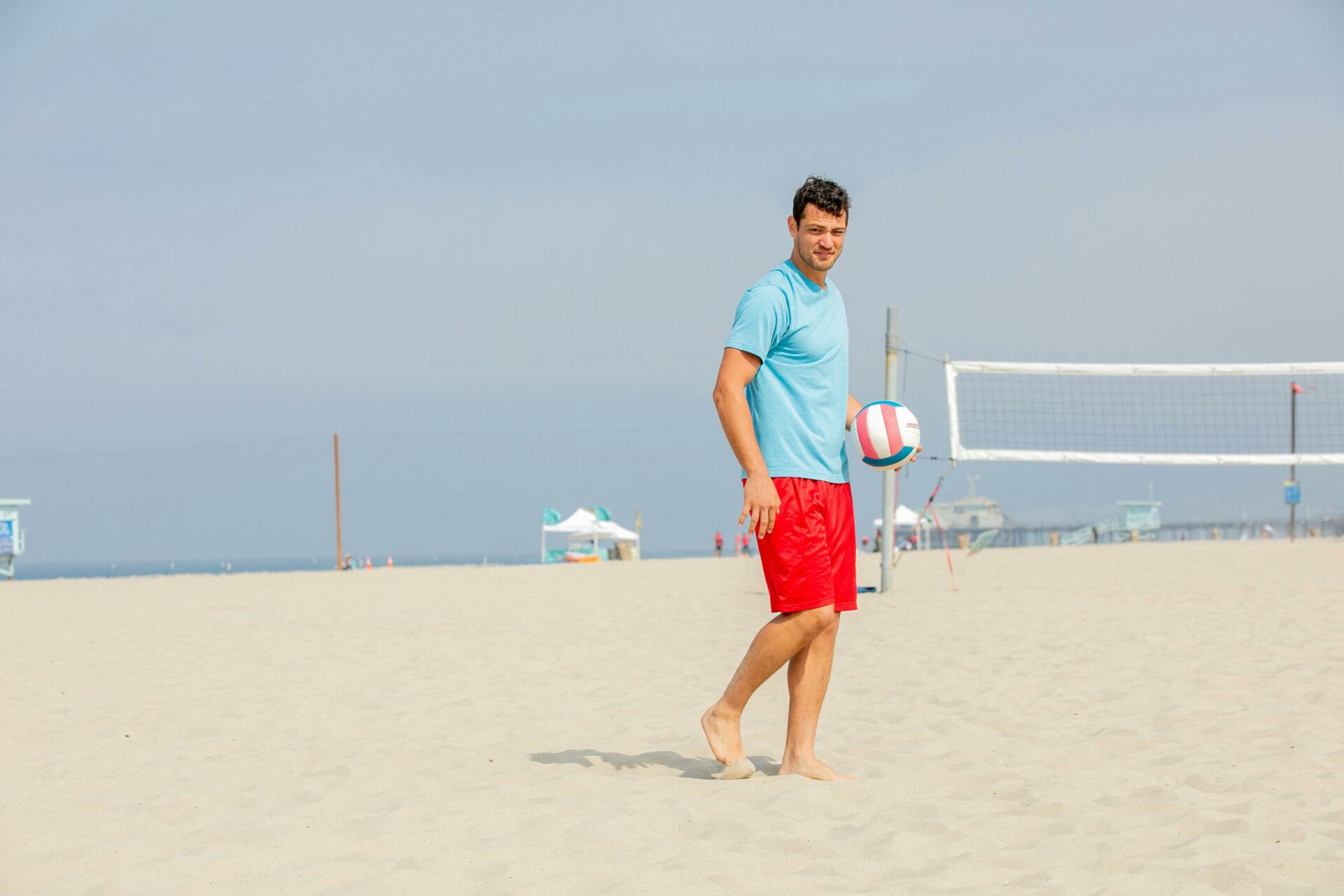Ball dynamics refer to the behavior and movement of balls in various sports and recreational activities. While it is often assumed that physics is the sole determinant of ball dynamics, there are several factors beyond the realm of physics that can significantly impact how a ball behaves. For instance, the surface on which the game is being played, the weather conditions, and even the skill and technique of the player can all influence the trajectory, spin, and speed of a ball. These factors create a fascinating interplay between the physical properties of the ball and the external variables, leading to a nuanced understanding of ball dynamics that goes beyond pure physics.
When it comes to ball dynamics, one of the crucial factors to consider is the playing surface. Whether it’s a grass field, a hardwood court, or a synthetic turf, the characteristics of the playing surface can profoundly affect how a ball moves and interacts with its surroundings. For instance, a soccer ball gliding smoothly on a well-manicured grass pitch will behave differently compared to the same ball bouncing erratically on a muddy field. The friction, grip, and even the bounce of the ball can vary significantly based on the surface, thereby requiring players to adapt their techniques accordingly for optimal performance.
Another factor that cannot be overlooked is the weather conditions. Wind, temperature, and humidity all contribute to altering ball dynamics in outdoor sports. For instance, a golfer aiming for the perfect shot needs to calculate how the wind speed and direction will influence the trajectory of the ball. Similarly, in baseball, the air density can affect the flight path of a pitched ball or the distance it travels when hit. By taking into account these weather-related variables, players gain a competitive edge by making more precise calculations and adjustments.
In the upcoming part of this article, we will delve into the key takeaways from understanding the factors affecting ball dynamics beyond physics. By exploring these insights, you’ll gain a deeper appreciation for the intricacies involved in various sports and recreational activities. We’ll discuss the impact of playing surfaces, weather conditions, and even individual skills on ball dynamics, helping you develop a well-rounded understanding of how these factors can shape game outcomes. So, let’s dive in and unlock the secrets that lie beyond the conventional understanding of physics in ball dynamics.
Key Takeaways
1. Surface type and friction play a significant role in affecting the dynamics of a ball. Different surfaces can impact how the ball bounces and rolls, and friction levels on these surfaces can greatly influence the ball’s speed and trajectory.
2. The hardness of the ball also affects its dynamics. Softer balls tend to absorb more energy upon impact, leading to lower rebound heights, while harder balls reflect more energy, resulting in higher rebound heights.
3. Air resistance is another crucial factor that affects ball dynamics. The shape, size, and texture of the ball can all influence the amount of air resistance experienced, with smoother balls facing less resistance and traveling further.
4. The temperature of the ball and its surroundings can significantly alter its dynamics. Warmer temperatures cause the air inside the ball to expand, increasing its internal pressure and resulting in a livelier bounce, while cooler temperatures have the opposite effect.
5. The inflating pressure of the ball is yet another factor that affects its dynamics. Higher pressures tend to make the ball more lively, leading to a greater rebound height and faster speeds, while lower pressures have the opposite effect, making the ball less bouncy and slower.
What are the Key Factors Affecting Ball Dynamics Beyond Physics?
1. Surface Material and Texture
The surface material and texture of a ball can significantly impact its dynamics beyond the basic laws of physics. The choice of material, such as rubber, leather, or synthetic compounds, can affect the ball’s bounce, spin, and overall performance. Additionally, the texture of the ball’s surface, including smoothness or the presence of dimples or ridges, can influence its aerodynamics and trajectory.
2. Temperature and Humidity
The environmental conditions, especially temperature and humidity, can alter the dynamics of a ball. As temperature and humidity levels change, the ball’s inflation pressure might be affected, subsequently affecting its bounce and flight characteristics. It is crucial to consider these factors when playing sports that involve ball dynamics, as they can significantly influence gameplay and performance.
3. Altitude and Air Pressure
When playing at different altitudes, the air pressure varies, which has a considerable impact on ball dynamics. The lower air pressure at higher altitudes can lead to a decreased flight stability of the ball, affecting its trajectory and control. Athletes and sports enthusiasts must understand these effects to adjust their strategies and make precise calculations to achieve desired outcomes.
4. Ball Shape and Weight
The shape and weight of a ball play a fundamental role in its dynamics beyond the principles of physics. A minor variation in shape or weight can alter the balance and behavior of the ball during motion. Manufacturers pay close attention to designing balls with the ideal shape and weight for specific sports, aiming to optimize their performance and ensure fair gameplay.
5. Impact of External Forces
External forces acting on a ball during gameplay, such as wind, water, or other objects, can affect its dynamics. For instance, a strong gust of wind can alter the trajectory of a soccer ball in mid-air, making it challenging to predict its path accurately. Understanding and accounting for these external factors are vital for athletes and players to adapt their techniques and tactics accordingly.
6. Manufacturing Quality and Consistency
The manufacturing quality and consistency of a ball can significantly influence its dynamics beyond physics. Variations in construction, such as variations in wall thickness or uneven mass distribution, can lead to inconsistencies in bounce, spin, and flight. High-quality balls with consistent construction provide more predictability and reliable performance during gameplay.
7. Skill and Technique of the Player
Lastly, when considering factors affecting ball dynamics, it is essential to acknowledge the skill and technique of the player. A player’s proficiency in handling the ball, applying the right force, spin, and angle can override some of the physical limitations of the ball. The mastery of technique and control allows players to maximize their performance and exploit the dynamics of the ball to their advantage.
8. How can you optimize ball dynamics for better gameplay?
- Choose a ball made with high-quality materials and construction for more consistent performance.
- Consider the environmental conditions like temperature, humidity, and air pressure, and adapt your gameplay accordingly.
- Understand the impact of external forces and learn to adjust your techniques to account for them.
- Practice and develop your skills and technique to optimize ball handling and control.
- Stay informed about the latest advancements and research in ball dynamics beyond physics to gain a competitive edge.
Frequently Asked Questions
1. What are the main factors that affect ball dynamics?
The main factors that affect ball dynamics beyond physics include friction, speed, angle of impact, surface properties, air pressure, temperature, and the ball’s material composition.
2. How does friction affect ball dynamics?
Friction plays a crucial role in ball dynamics as it determines the amount of resistance the ball experiences when rolling or sliding on a surface. Higher friction can slow down the ball’s motion, whereas lower friction allows the ball to move more easily.
3. Does the speed of the ball affect its dynamics?
Yes, the speed of the ball has a significant impact on its dynamics. Higher speeds can result in increased momentum and kinetic energy, influencing how the ball behaves upon impact and its overall trajectory.
4. How does the angle of impact affect ball dynamics?
The angle of impact determines how the ball interacts with a surface. Different angles can result in varying degrees of rebound, spin, and trajectory. The angle can also affect the amount of friction encountered by the ball.
5. What role do surface properties play in ball dynamics?
The properties of the surface, such as roughness or smoothness, elasticity, and texture, can significantly influence the behavior of the ball. These properties affect the amount of friction, the level of bounce, and the spin generated when the ball interacts with the surface.
6. Can air pressure impact ball dynamics?
Air pressure inside the ball can affect its dynamics by altering its bounce, overall behavior, and response to external forces. Higher air pressure generally results in a higher bounce, while lower air pressure can lead to a lower bounce and altered trajectories.
7. Does temperature affect ball dynamics?
Temperature can affect the material properties of the ball, including its elasticity and stiffness. As temperature changes, the ball’s behavior, bounce, and overall dynamics may be altered.
8. How does the ball’s material composition impact its dynamics?
The material composition of the ball determines its density, elasticity, and other physical properties. Different materials can have varying impacts on the ball’s bounce, spin, and overall behavior when subjected to external forces.
9. Are there factors beyond physics that affect ball dynamics?
Yes, there can be factors beyond physics that affect ball dynamics, such as the psychological state of the player, environmental conditions (e.g., wind or humidity), and specific conditions unique to certain sports or games.
10. Can ball dynamics be predicted accurately based on these factors?
Predicting ball dynamics accurately based solely on these factors can be challenging. The complexity and interplay of various influencing factors make it difficult to have precise predictions in every situation. However, understanding these factors can provide valuable insights into the behavior of balls in different scenarios.
Final Thoughts
The factors affecting ball dynamics are not limited to the laws of physics alone. Numerous additional factors come into play, shaping how a ball moves, bounces, and interacts with its surroundings. By considering elements like friction, speed, angle of impact, surface properties, air pressure, temperature, and material composition, we gain a deeper understanding of the intricacies involved in the dynamics of a ball.
Factors beyond physics, such as environmental conditions and individual psychological aspects, can also influence the behavior of a ball. Accounting for these diverse factors and their interactions allows us to further explore and appreciate the complexity of ball dynamics. By continuously expanding our knowledge, we can enhance our ability to analyze and predict the behavior of balls in various contexts, leading to advancements in fields ranging from sports to engineering.




